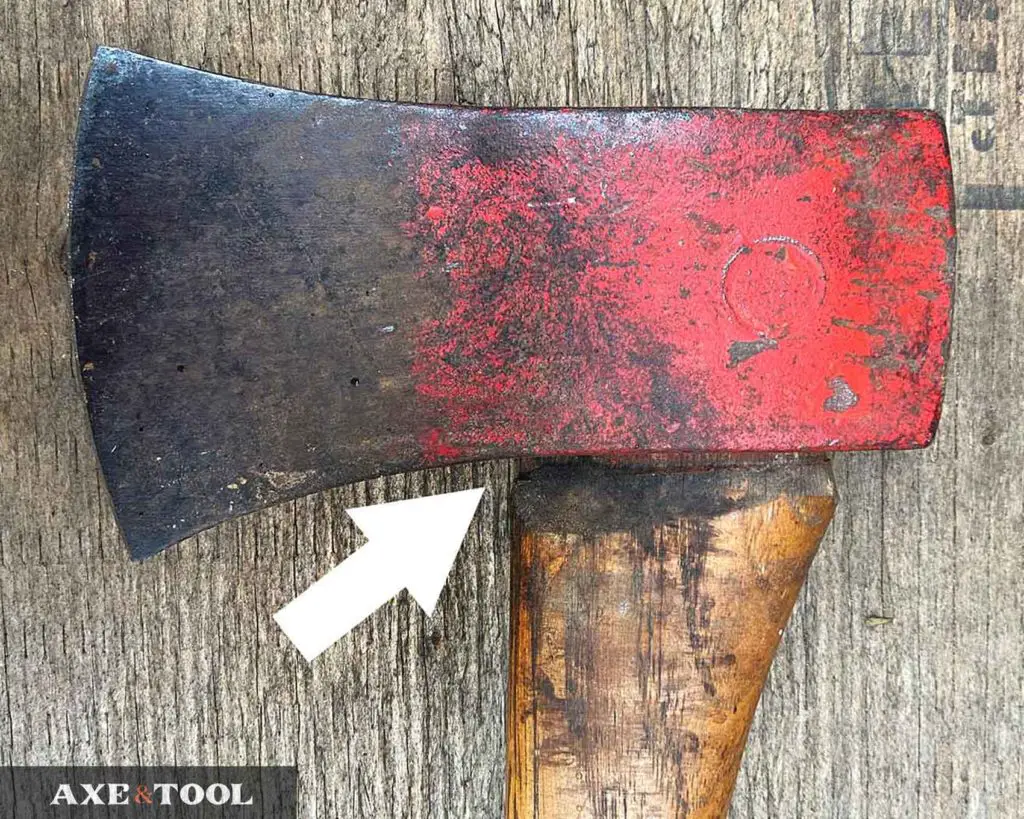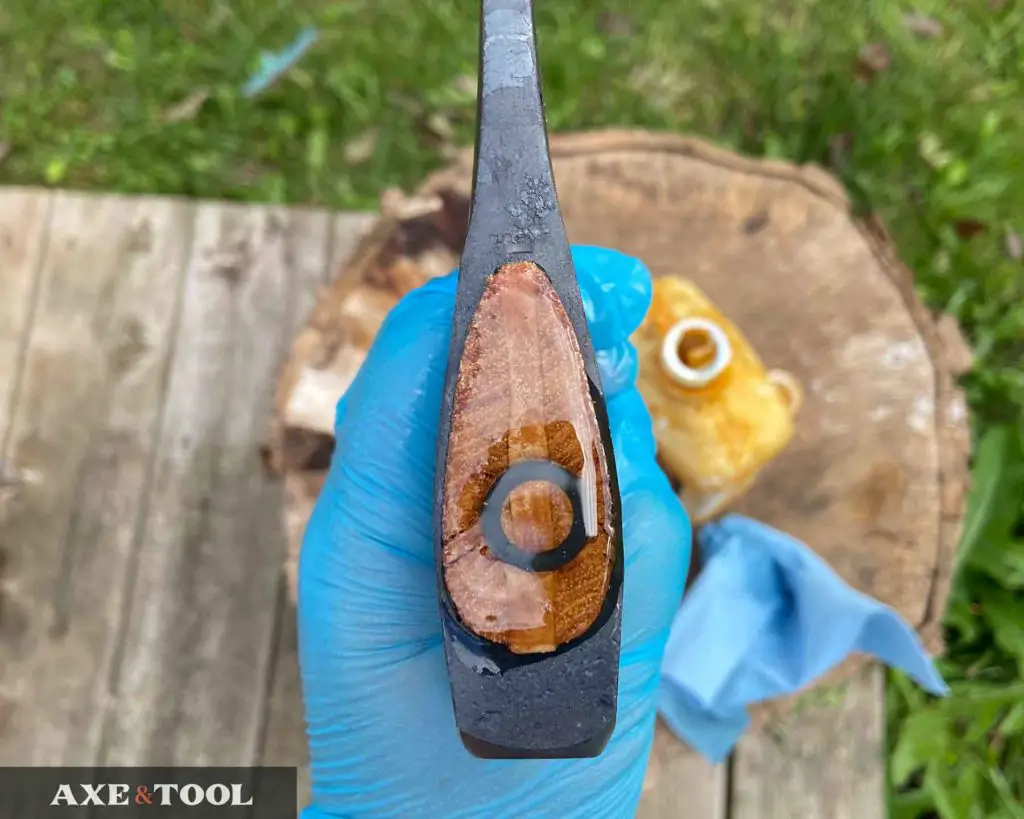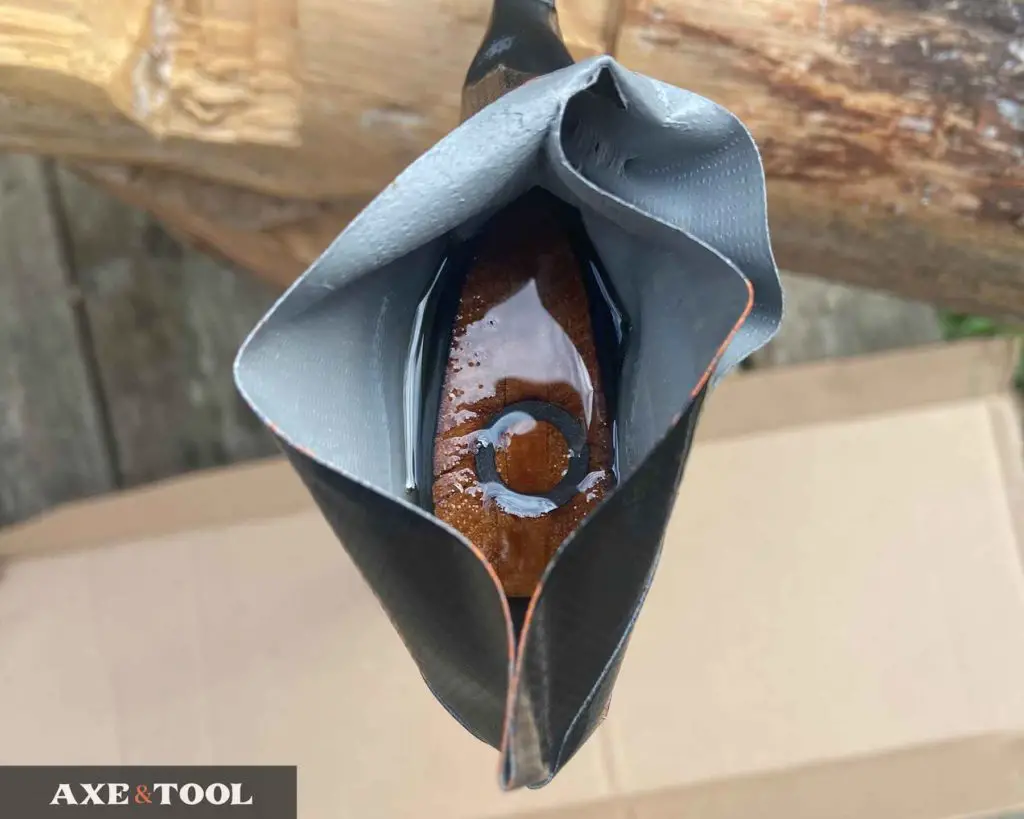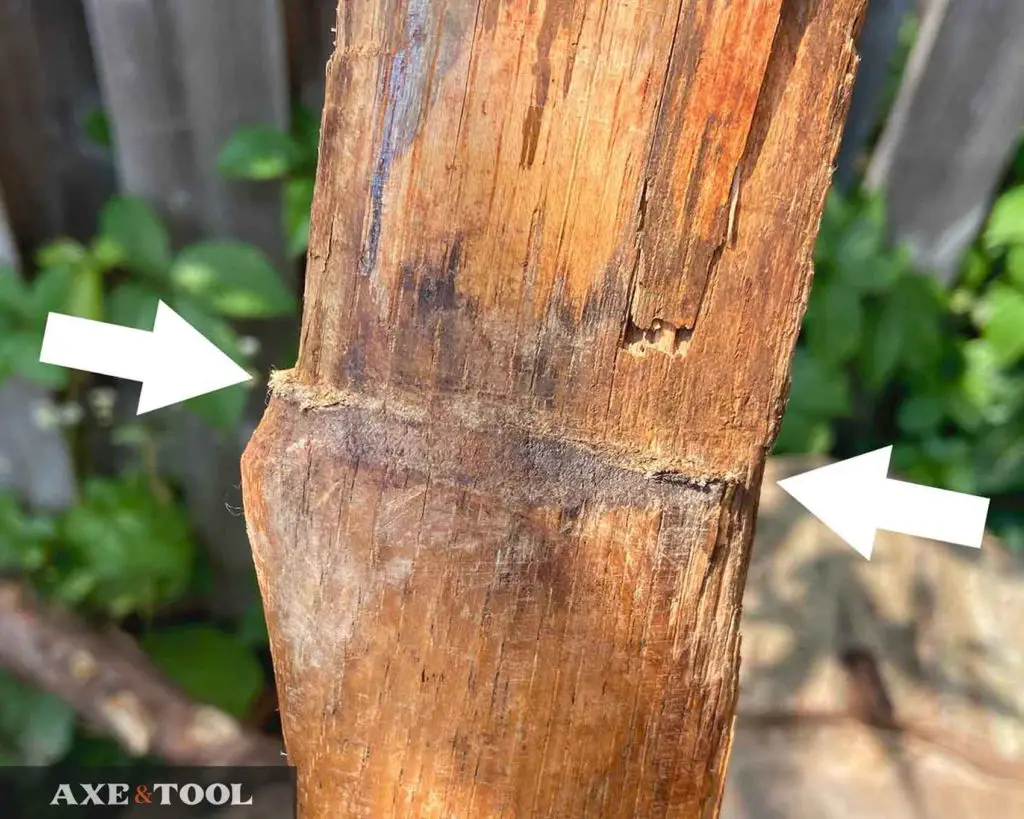Keep Your Axe Head From Loosening

The best way to prevent your axe head from loosening over time is to heavily oil the eye of the handle and store the axe properly in a climate-controlled area when not in use.
If your axe is already loose – check out the guide for how to fix a loose axe.
Storing your axe properly
The key to properly storing your axe is keeping it in a climate-controlled environment.
Changes in temperature and humidity can cause a wood handle to expand, shrink, warp, and dry out. So storing an axe in a shed, garage, or vehicle long-term can be damaging (especially if the handle isn’t properly oiled).
These factors won’t loosen your axe right away, you often need to expose your axe to the elements for a while (that’s kind of the point). Just don’t store your axe improperly for extended periods. The more extreme the climate, the faster it will deteriorate your axe.
I now have a full article on how to properly store your axe.
Heat, moisture & humidity will loosen an axe
Heat, moisture, and humidity will all cause wood to expand, pressing the handle even tighter against the metal eye of the axe. While that might sound like a good thing, the extra pressure can crush the fibers of the handle or (typically softer) wooden wedge. This means when the axe cools down again the wood will shrink, now smaller and weaker than it originally started – making it loose.
These conditions will also rust the head. You can get flash rust just from moisture in the air. If you need I have an article about every way to protect an axe from rust.
Cold and dry climates can loosen an axe
Cold and dry conditions will make the wood fibers shrink, and the head can shift from its original hang. This will make the head loose AND cause future compression on the wood that shifted into the eye once the handle warms up and expands again – making it looser.
Of course, you can have hot and dry or cold and damp, it’s all bad.
The best way to protect your axe handle (and head) from the elements, and prevent it from loosening even if stored under adverse conditions is to heavily oil the handle, focusing on the eye of the axe.
Bonus storage tip: Even if you store your axe indoors properly, don’t lean your axe against the wall. The weight from the head will slowly bend the handle over time.
Oiling the eye of an axe (2 methods)

Oiling the handle with a hardening wood oil like boiled linseed oil will help stabilize the wood, sealing moisture in and preventing it from expanding or contracting (so much) with the temperature or humidity.
Oiling the eye is an important part of keeping the head on tight, so that’s where we will focus now, but I have a full article on the proper way to oil an axe handle.
If the end of the handle that sticks through the eye has been painted or varnished, you are going to need to sand it so the oil can properly soak in.
You want to soak the oil deep into the handle within the head so that there is no “wiggle room”. There are two easy ways to heavily oil the eye.
#1: Bucket Method
Fill a bucket with boiled linseed oil, and stick the axe head down in the bucket. Let the axe sit and soak up the oil for at least 24 hours.
After you have let it soak, wipe off any remaining surface oil so it’s dry to the touch, and let the axe dry thoroughly (internally) for at least another 24 hours.
But let’s be honest – not everyone has (or wants) a bucket of boiled linseed oil around. I don’t. The second way takes a lot less oil.
#2: Tape Cup Method
Clamp the axe upright, and make a cup around the eye using duct tape that you can fill with oil. Don’t just use a single strip of duct tape, add extra layers as the oil can ruin the adhesive.
Tape or tie a rage around the bottom of the head, so any oil that leaks through won’t run down the handle, it will just soak more around the shoulder of the handle.
Tip: I would also put a towel or bucket down beneath the axe, just in case there are leaks.

Pour in as much oil as you feel will hold in the cup and let it soak in. Check periodically to see if the oil has been fully soaked in. The exposed grain at the end of the handle will draw down the oil like a straw, soaking it down into the eye of the axe.
Eventually, it will stop soaking, but you don’t need to keep going until that point. Just top up a few times during the day.
After the oil has fully soaked in you can remove all the tape and rags, wipe down and let dry for another 24 hours.
Note: If oil got on the head of the axe, just wipe it in there too. Once it hardens BLO makes a great rust protector on axe heads. I have another article all about rust proofing your axe.
Tips when hanging an axe
If you are in the process of hanging an axe two tips will help keep the head from loosening with heavy use shaping the shoulders and chamfering the eye.
Shaping the shoulders
Most new handles come with very wide shoulders, which can compress over time with use. The bottom edge of the eye will press down from the force of chopping, creating a little ledge and loosening the head. It will only get worse as the head starts to bounce against the “ledge” with each chop.
Slim the shoulders before hanging the head so it’s a gradual slope, and the head is not sitting on a ledge.

You can see the ledge formed on this old handle
Chamfer the bottom edge of the eye
File a small bevel around the inside edge of the bottom eye. You want it to be beveled or rounded so it’s not a sharp edge that can cut into the handle and form a ledge. It can just be a mm or 1/32 of an inch, that’s all it takes.
Hope this article helped, and your axe stays strong.
Please comment below If I missed something or if you have any questions. I do my best to respond to everyone.
About the author:
About the author:
Jim Bell | Site Creator
I’m just a guy who likes axes. I got tired of only finding crap websites, so I set out to build a better one myself.
I’m also on Instagram: @axeandtool


Hi Jim, I picked up a used axe the other day. I was trying to identify it’s brand. I believe it’s the same type as the one with the red painted one, pictured at the start of the article with a white arrow pointing at it. I was wondering if you could tell me a little of it and it’s manufacture? Thanks Phil
The one in the picture is an old Garant. They are a Canadian company. They have almost exclusively used that pattern for decades (with red paint). So if you are in Canada or even the Northern States, its most likely a Garant. Although it’s impossible to know for sure.